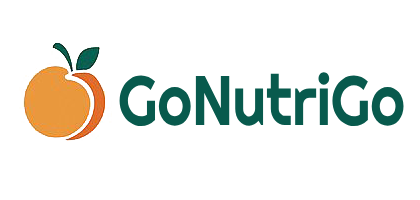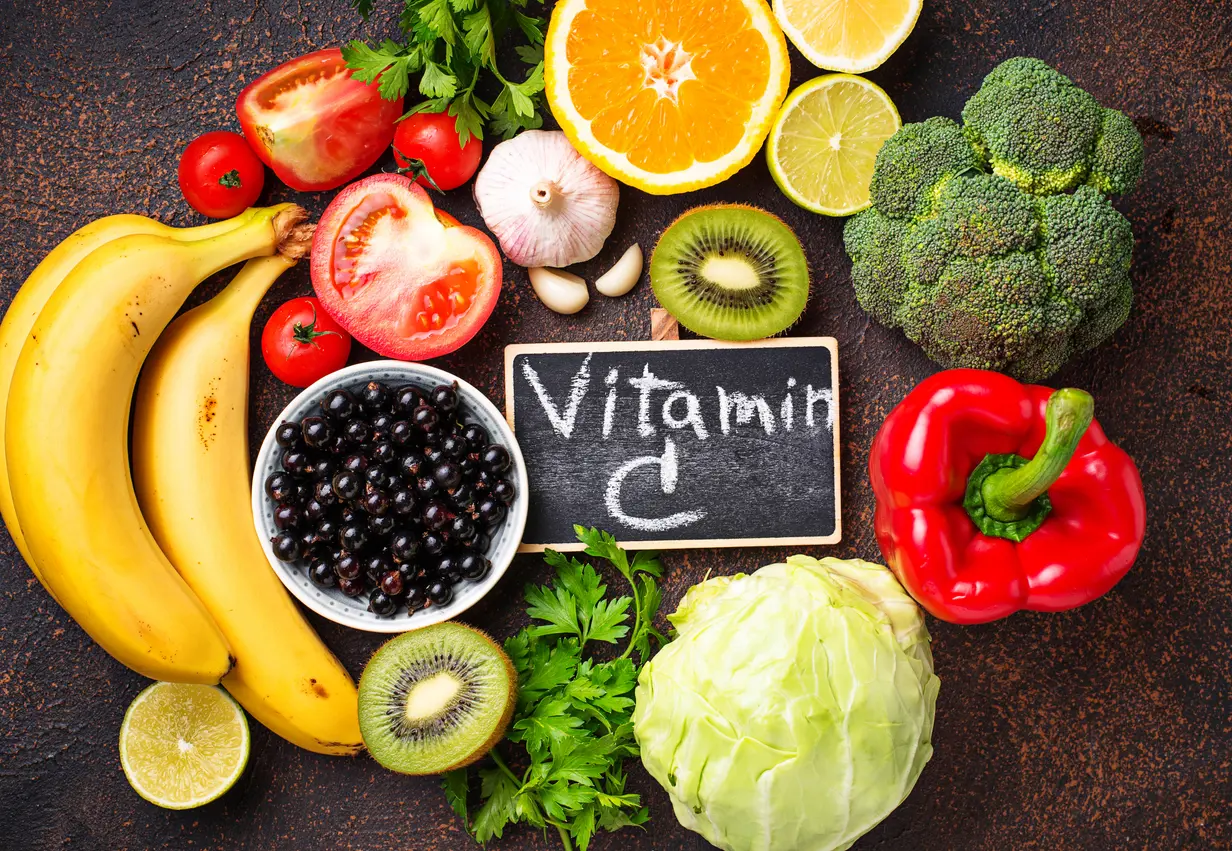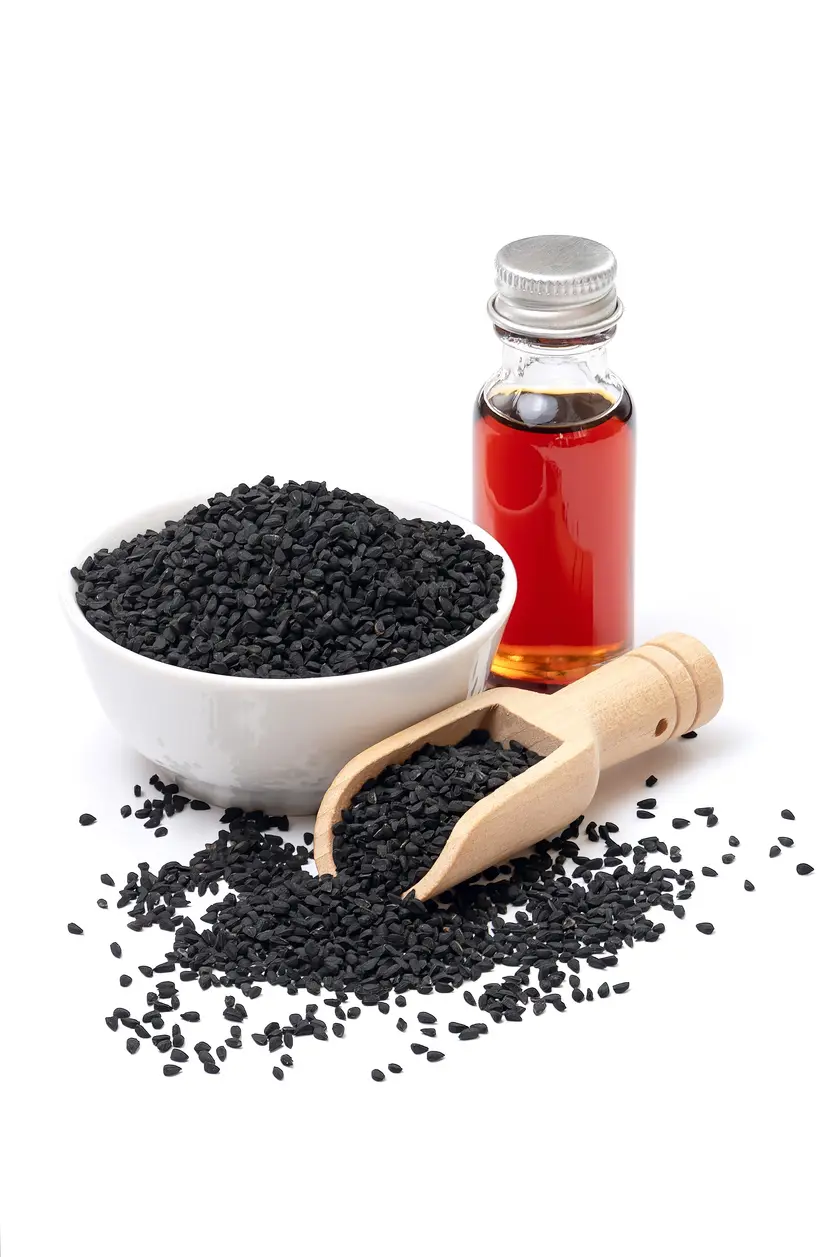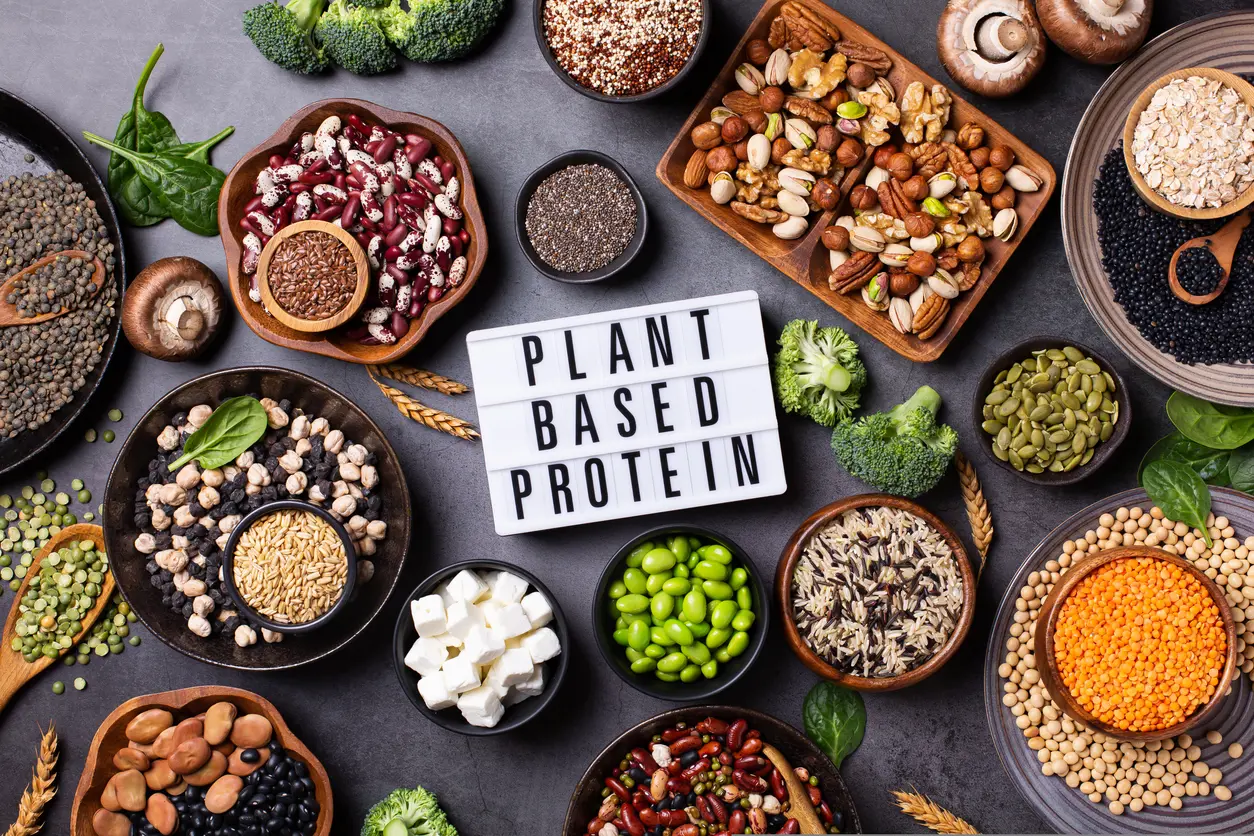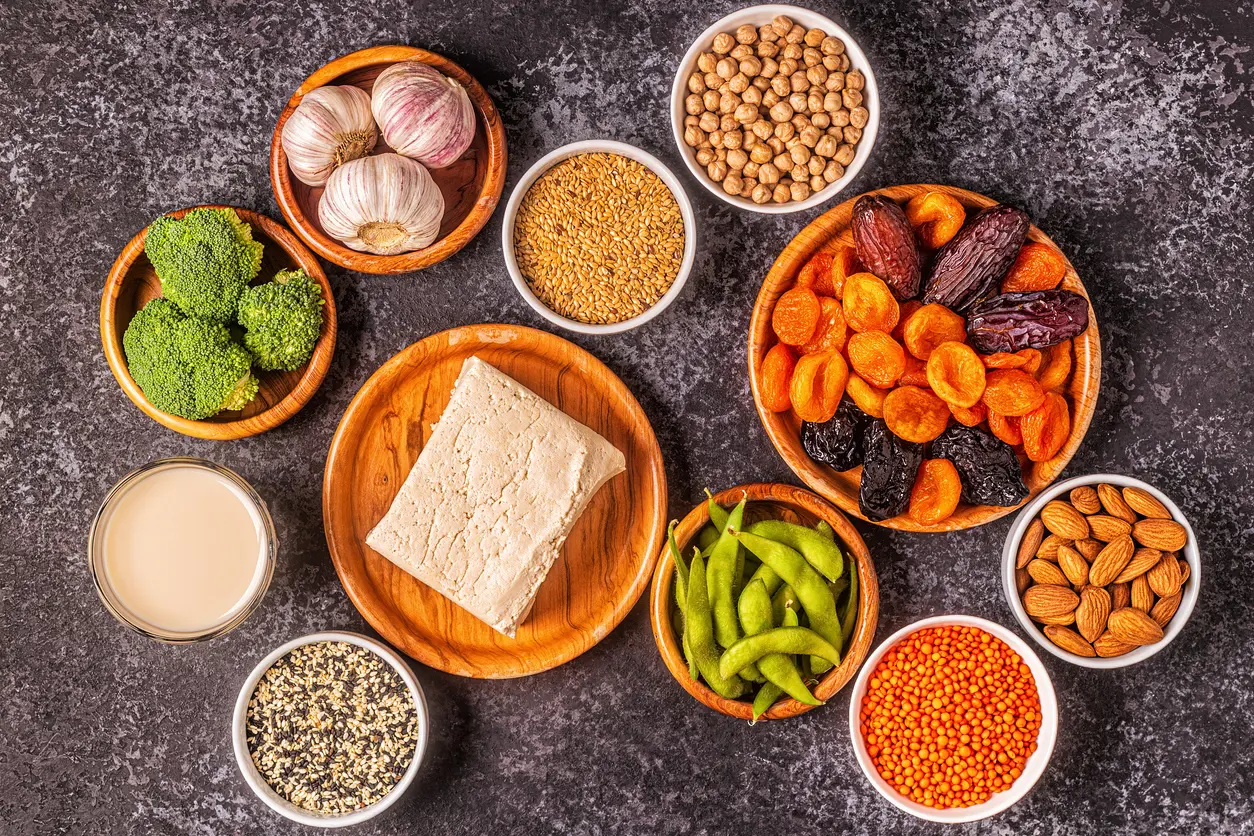20 Vitamin D Rich Foods That Will Help You Stay Healthy
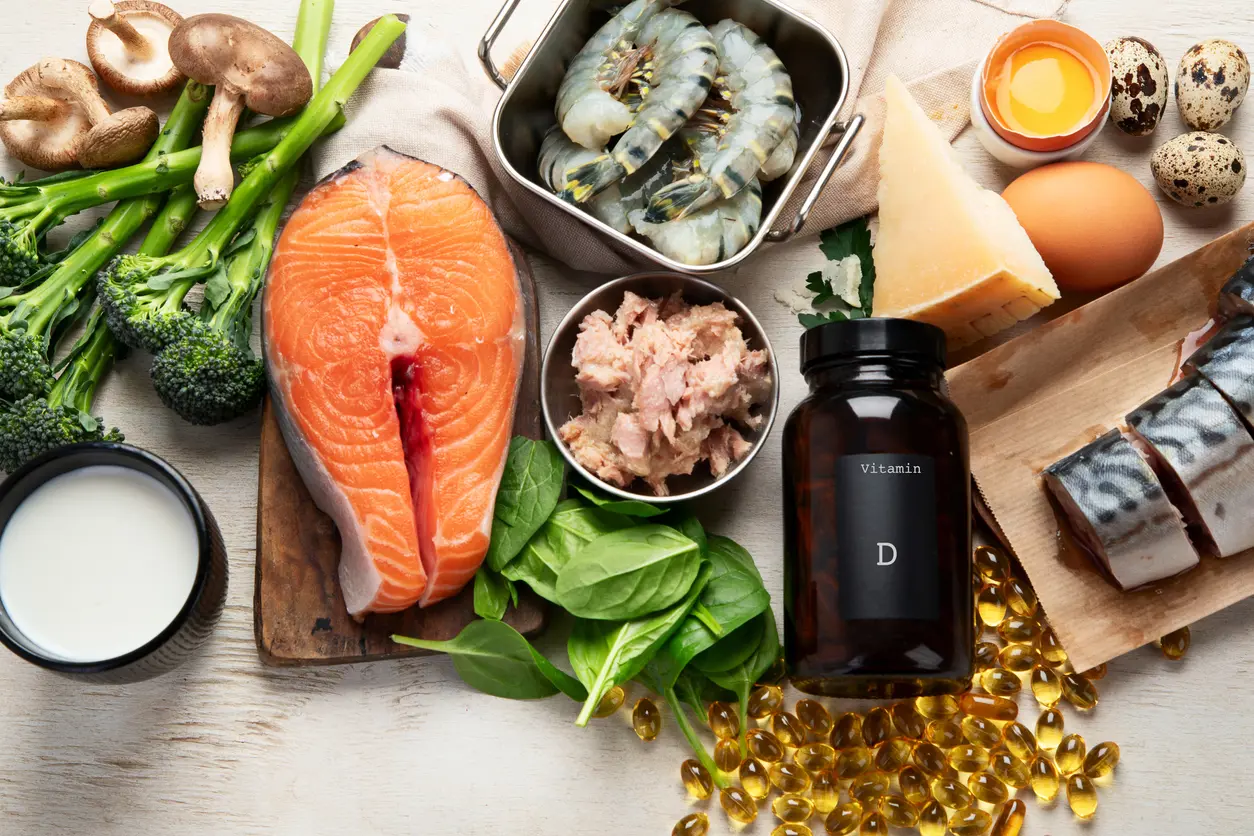
Vitamin D, commonly known as the sunshine vitamin, plays a critical role in our overall health. From optimizing bone health, supporting immune function, and even regulating mood, vitamin D is surely a vitamin to prioritize in the diet.
Unfortunately, due to inadequate vitamin D in the diet, little time in the sun, and differing absorption abilities, close to ¼ of Americans are deficient in vitamin D [1] Amrein K et al. Vitamin D deficiency 2.0: an update on the current status worldwide. Eur J Clin Nutr. 2020;74(11):1498-1513. doi:10.1038/s41430-020-0558-y . And while soaking in vitamin D from the sun is ideal, those with darker skin, older adults, and those living in northern climates may not produce enough vitamin D from sun exposure alone. That’s why consuming foods rich in vitamin D is so important to help bridge this gap.
Keep reading for a list of the top 20 best vitamin D foods, including both animal and plant-based options to help you meet your daily needs.
Why Vitamin D Matters
Vitamin D is a fat-soluble vitamin involved in various aspects of wellness, including bone health, immunity, inflammation, and more.
Keeps bones strong
Vitamin D helps promote the mineralization of bone, which helps keep bones strong and well-functioning [2] Meryl S LeBoff et al. Effects of Supplemental Vitamin D on Bone Health Outcomes in Women and Men in the VITamin D and OmegA‐3 TriaL (VITAL), Journal of Bone and Mineral Research, Volume 35, Issue 5, 1 May 2020, Pages 883–893, https://doi.org/10.1002/jbmr.3958 . Taking vitamin D enhances calcium absorption in the gut, which may be one way in which it strengthens bones [3] National Institutes of Health. Vitamin D. National Institutes of Health. Published July 26, 2024. .
Supports immunity
Vitamin D deficiency is associated with increased susceptibility to infection and even autoimmune diseases [4] Martens PJ, Gysemans C, Verstuyf A, Mathieu AC. Vitamin D's Effect on Immune Function. Nutrients. 2020;12(5):1248. Published 2020 Apr 28. doi:10.3390/nu12051248 . It is thought to do this by enhancing the body’s natural defenses against infection and illness.
Reduces inflammation
Inflammation is linked to several chronic diseases such as diabetes, heart disease, and cancer. Vitamin D has been shown in some studies to reduce inflammatory compounds associated with these diseases [5] Fenercioglu AK. Fenercioglu AK. The Anti-Inflammatory Roles of Vitamin D for Improving Human Health. Current Issues in Molecular Biology. 2024; 46(12):13514-13525. https://doi.org/10.3390/cimb46120807 .
Mood regulation
Vitamin D is seen to promote the activity of serotonin, a brain chemical that promotes a happier mood. Inadequate vitamin D has been linked to a more negative mood and depression symptoms, and is associated with seasonal depression [6] Guzek D, Kołota A, Lachowicz K, Skolmowska D, Stachoń M, Głąbska D. Association between Vitamin D Supplementation and Mental Health in Healthy Adults: A Systematic Review. J Clin Med. 2021;10(21):5156. Published 2021 Nov 3. doi:10.3390/jcm10215156 .
Those who suffer from seasonal depression, known as seasonal affective disorder (SAD), tend to have lower vitamin D levels [7] Mayo Clinic. Seasonal Affective Disorder (SAD) - Symptoms and Causes. Mayo Clinic. Published December 14, 2021. .
Signs of Vitamin D Deficiency
The risks of vitamin D deficiency include fatigue, bone pain, weakened immunity, and depression [8] Cleveland Clinic. Vitamin D deficiency: Causes, symptoms & treatment. Cleveland Clinic. Published August 2, 2022. .
Fatigue
Vitamin D plays a role in energy metabolism and neurotransmitter production (i.e., brain chemicals), so low levels may contribute to ongoing tiredness and low energy [9] Di Molfetta IV, Bordoni L, Gabbianelli R, Sagratini G, Alessandroni L. Vitamin D and Its Role on the Fatigue Mitigation: A Narrative Review. Nutrients. 2024;16(2):221. Published 2024 Jan 10. doi:10.3390/nu16020221 .
Bone pain
The body can’t properly absorb calcium without enough vitamin D, which can lead to soft or weakened bones and dull, achy pain [10] Babaei M, Esmaeili Jadidi M, Heidari B, Gholinia H. Vitamin D deficiency is associated with tibial bone pain and tenderness. A possible contributive role. Int J Rheum Dis. 2018;21(4):788-795. doi:10.1111/1756-185X.13253 .
Frequent infections/colds
Since vitamin D helps regulate immune responses, a deficiency can impair the body’s ability to fight off viruses and bacteria. [11] Sîrbe C, Rednic S, Grama A, Pop TL. An Update on the Effects of Vitamin D on the Immune System and Autoimmune Diseases. Int J Mol Sci. 2022;23(17):9784. Published 2022 Aug 29. doi:10.3390/ijms23179784
This can result in more frequent colds and infections that get in the way of your day-to-day life.
Rickets (children)
A severe vitamin D deficiency in children can lead to rickets, a condition that causes soft, weak bones due to poor calcium and phosphate absorption. [12] Mayo Clinic. Rickets - Symptoms and Causes. Mayo Clinic. Published February 25, 2021.
Osteoporosis (adults)
As vitamin D is essential for calcium absorption, chronic vitamin D deficiency is linked to the development of osteoporosis in adults. [13] De Martinis M, Allegra A, Sirufo MM, et al. Vitamin D Deficiency, Osteoporosis and Effect on Autoimmune Diseases and Hematopoiesis: A Review. Int J Mol Sci. 2021;22(16):8855. Published 2021 Aug 17. doi:10.3390/ijms22168855
How Much Vitamin D Do You Need?
The recommended daily intake (RDA) for vitamin D varies based on age and life stage. For most adults, a daily intake of 600-800 International Units (IU) per day is recommended for optimal health. [3] National Institutes of Health. Vitamin D. National Institutes of Health. Published July 26, 2024.
- Infants - 400 IU/day
- Pregnancy and lactation - 600 IU/day
- Ages 1-70 - 600 IU/day
- 70 years and older or those with limited sun exposure - 800 IU/day
It’s important to note that there are two different forms of vitamin D ⸺ ergocalciferol (vitamin D2) and cholecalciferol (vitamin D3). The main active form of vitamin D is cholecalciferol, or D3, and therefore is seen to be more effective in raising vitamin D levels in the blood. [14] van den Heuvel EG, Lips P, Schoonmade LJ, Lanham-New SA, van Schoor NM. Comparison of the Effect of Daily Vitamin D2 and Vitamin D3 Supplementation on Serum 25-Hydroxyvitamin D Concentration (Total 25(OH)D, 25(OH)D2, and 25(OH)D3) and Importance of Body Mass Index: A Systematic Review and Meta-Analysis. Advances in Nutrition (Bethesda, Md). Published online October 20, 2023:S2161-8313(23)013947. doi:https://doi.org/10.1016/j.advnut.2023.09.016
Vitamin D levels are measured in the blood by measuring the levels of 25-hydroxyvitamin D, the active form of vitamin D in the body. They are measured in nanomoles per liter (nmol/L). [15] National Institutes of Health. Vitamin D. National Institutes of Health. Published 2022. https://ods.od.nih.gov/factsheets/VitaminD-Consumer/
Most vitamin D supplements are in D3 form for this reason. However, while supplements are a helpful addition to fill in dietary gaps, a food-first approach is ideal when possible. This is because whole foods contain other nutrients along with vitamin D that may work together to produce their health benefits.
20 Vitamin D Rich Foods to Add to Your Diet
Vitamin D is naturally found in several foods, as well as fortified foods and beverages where it is added during the manufacturing process. It’s important to note that vitamin D amounts in some foods, such as fish, may vary based on how they were raised and whether they are farm-raised, fresh, frozen, or canned.
So, what foods are rich in vitamin D? Here are the top vitamin D foods, ranked from highest to lowest amounts.
Animal-Based Sources
1. Cod liver oil
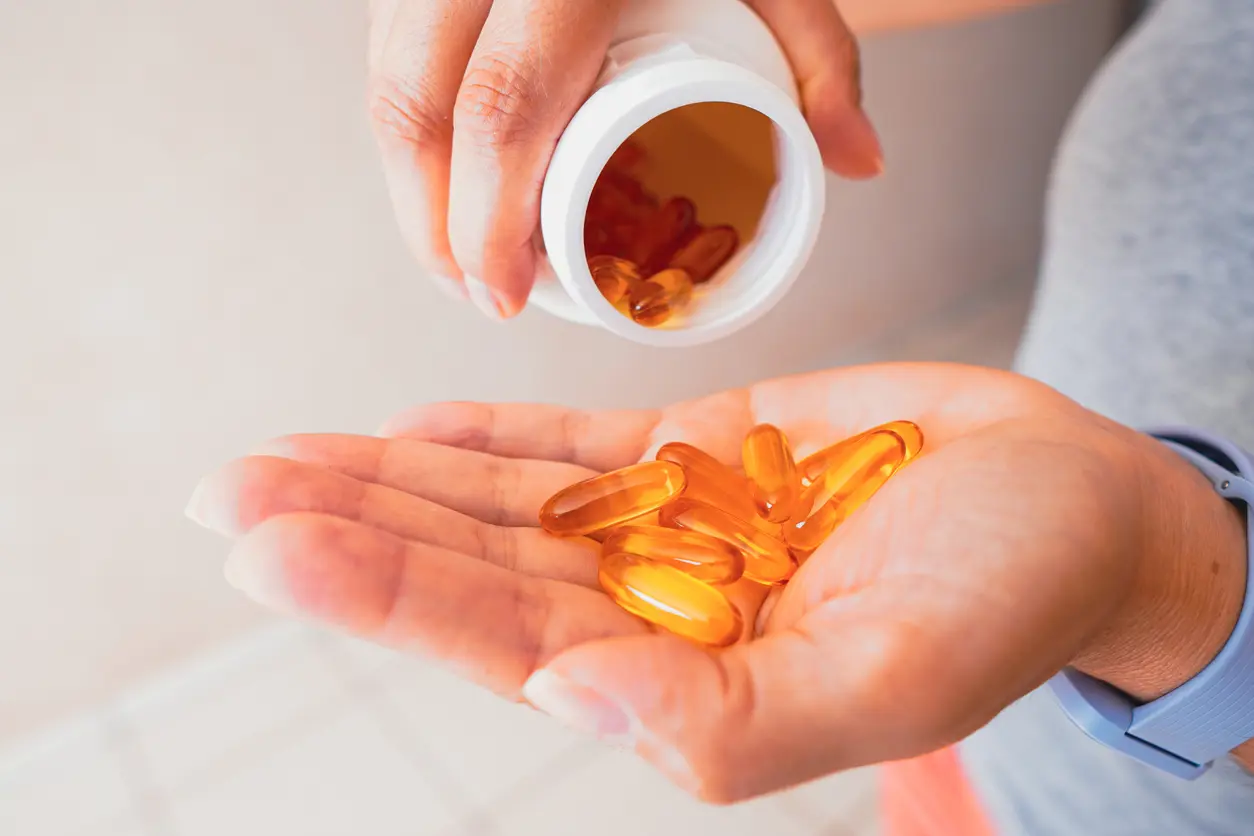
- Vitamin D content: 1,360 IU in 1 tbsp [16] FoodData Central. USDA. Fish Oil, Cod Liver.
- Health benefits: Cod liver oil tops our list for the most vitamin D-rich food out there. It is also high in vitamin A to support eye and skin health.
- How to eat it: You can take cod liver oil by the spoonful or mix it into smoothies to mask its strong taste. You can choose a flavored variety if preferred for more enjoyment.
2. Salmon
- Vitamin D content: 493 IU in 3 ounces (oz) [17] USDA National Nutrition Database - Vitamin D IU.
- Health benefits: Salmon is rich in omega-3 fatty acids, fats that support heart and brain health. They also have the potential to lower triglycerides, harmful circulating fats in the body that can increase the risk of health problems. [18] Cleveland Clinic. Omega-3 Fatty Acids. Cleveland Clinic. Published November 17, 2022.
- How to eat it: Enjoy grilled or baked with a drizzle of olive oil, lemon juice, and herbs. Serve alongside brown rice and sautéed spinach or add to a mixed green salad for a nutrient-rich meal.
3. Mackerel
- Vitamin D content: 248 IU in 3 oz [19] USDA National Nutrient Database for Standard Reference Release 28 Nutrients: Vitamin D (IU). https://ods.od.nih.gov/pubs/usdandb/VitaminD-Content.pdf
- Health benefits: Mackerel is one of the best omega-3 fat sources, and it is shown to support cardiovascular health. Studies show people who eat mackerel regularly have lower blood pressure and less cholesterol in their blood. [20]
- How to eat it: Mackerel can be grilled, baked, or canned, and is perfect for adding to salads, grain bowls, or whole-wheat toast for a vitamin D-rich snack.
4. Tuna
- Vitamin D content: 231 IU in 3 oz [21] Current Dietary Guidelines. Food Sources of Vitamin D.
- Health benefits: A lean protein source containing vitamin D as well as selenium for thyroid support. Research also shows that selenium in tuna can reduce the potentially toxic effects of mercury. [22] Tinggi U, Perkins AV. Selenium Status: Its Interactions with Dietary Mercury Exposure and Implications in Human Health. Nutrients. 2022;14(24):5308. Published 2022 Dec 14. doi:10.3390/nu14245308
- How to eat it: Scoop onto a salad, whole wheat crackers, or into a wrap for a quick and nourishing meal or snack.
5. Sardines
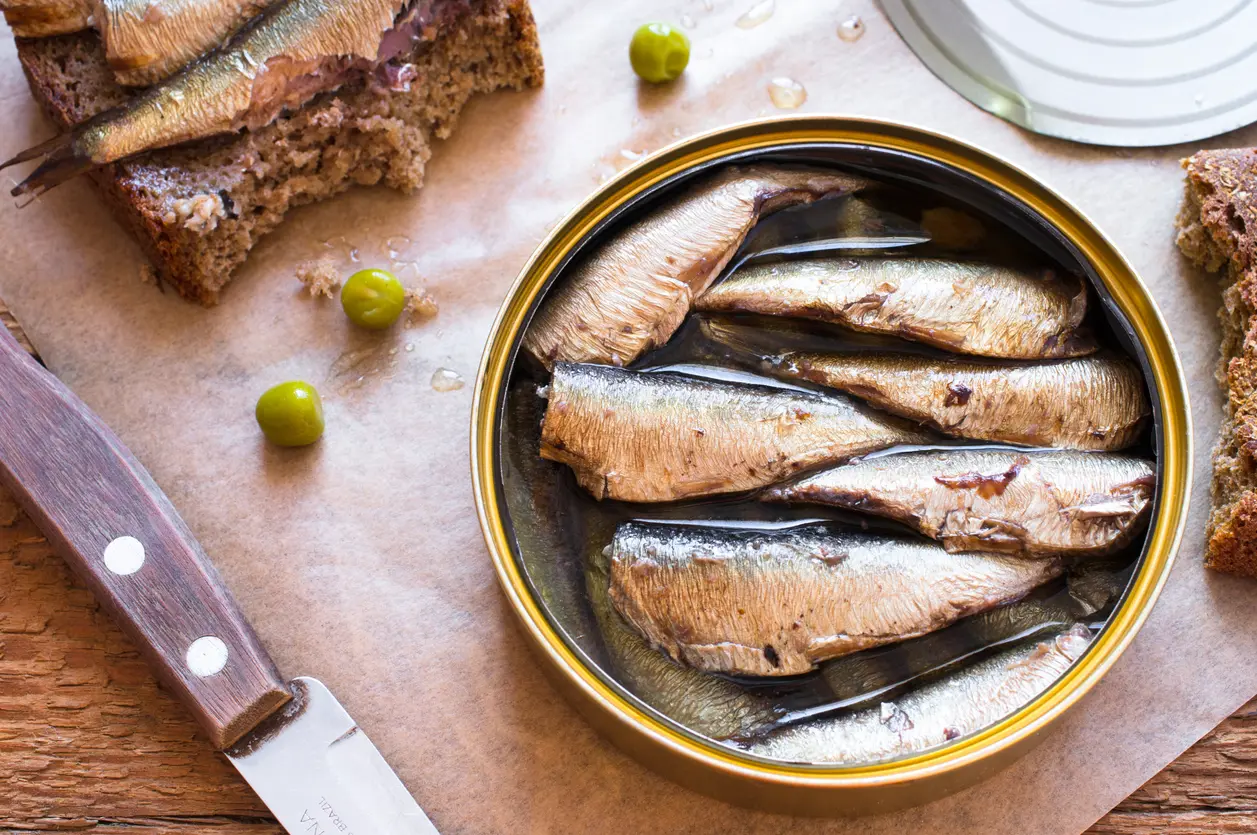
- Vitamin D content: 164 IU in 3 oz [21] Current Dietary Guidelines. Food Sources of Vitamin D.
- Health benefits: Sardines are not only high in vitamin D and omega-3s, but are also rich in calcium and phosphorus to promote strong bones. [23] Santos HO, May TL, Bueno AA. Eating more sardines instead of fish oil supplementation: Beyond omega-3 polyunsaturated fatty acids, a matrix of nutrients with cardiovascular benefits. Front Nutr. 2023;10:1107475. Published 2023 Apr 14. doi:10.3389/fnut.2023.1107475
- How to eat them: Sardines can be eaten straight from the can, added to salads, or mashed onto whole-grain crackers with a squeeze of lemon.
6. Fortified milk
- Vitamin D content: 117 IU in 1 cup [3] National Institutes of Health. Vitamin D. National Institutes of Health. Published July 26, 2024.
- Health benefits: Whole and reduced-fat dairy milk is often fortified with vitamin D and also contains calcium to further support bone health and strength.
- How to drink it: Enjoy a cold glass of milk on its own, in your favorite cereal or oatmeal, or mixed into a protein shake to bump your vitamin D intake.
7. Fortified yogurt
- Vitamin D content: 116 IU in 8 oz [21] Current Dietary Guidelines. Food Sources of Vitamin D.
- Health benefits: Contains probiotics for gut health in addition to vitamin D and quality protein to support muscle health.
- How to eat it: Add to a smoothie for extra protein, make a yogurt bowl with granola, fruit, and shredded coconut, or enjoy on its own as an afternoon snack.
8. Fortified cheese
- Vitamin D content: 85 IU in 1.5 oz [21] Current Dietary Guidelines. Food Sources of Vitamin D.
- Health benefits: Cheese not only supplies vitamin D, but also protein and calcium, which work as a team to support muscle and bone health.
- How to eat it: Pair low-fat string cheese with fruit, whole-grain crackers, or your favorite raw veggies for a balanced, satisfying meal or snack.
9. Beef liver
- Vitamin D content: 54 IU in 4 oz [24] FoodData Central. USDA. Beef liver, raw.
- Health benefits: Beef liver is very rich in iron and vitamin B12, two key nutrients in preventing anemia.
- How to eat it: While some may be intimidated by eating liver, the magic is how you cook it. Beef liver can be pan-seared with onions and herbs, or blended into ground meat dishes like meatballs to boost nutrition.
10. Eggs
- Vitamin D content: 36 IU in 1 egg [25] FoodData Central. USDA. Egg, whole, raw, fresh.
- Health benefits: In addition to containing vitamin D, eggs are a good source of choline, a lesser-known but essential nutrient for brain development and liver function. [26] National Institutes of Health. Office of Dietary Supplements - Choline. Nih.gov. Published 2017.
- How to eat them: Enjoy scrambled, make a savory frittata with veggies, or hard-boil on busy workday mornings.
11. Caviar
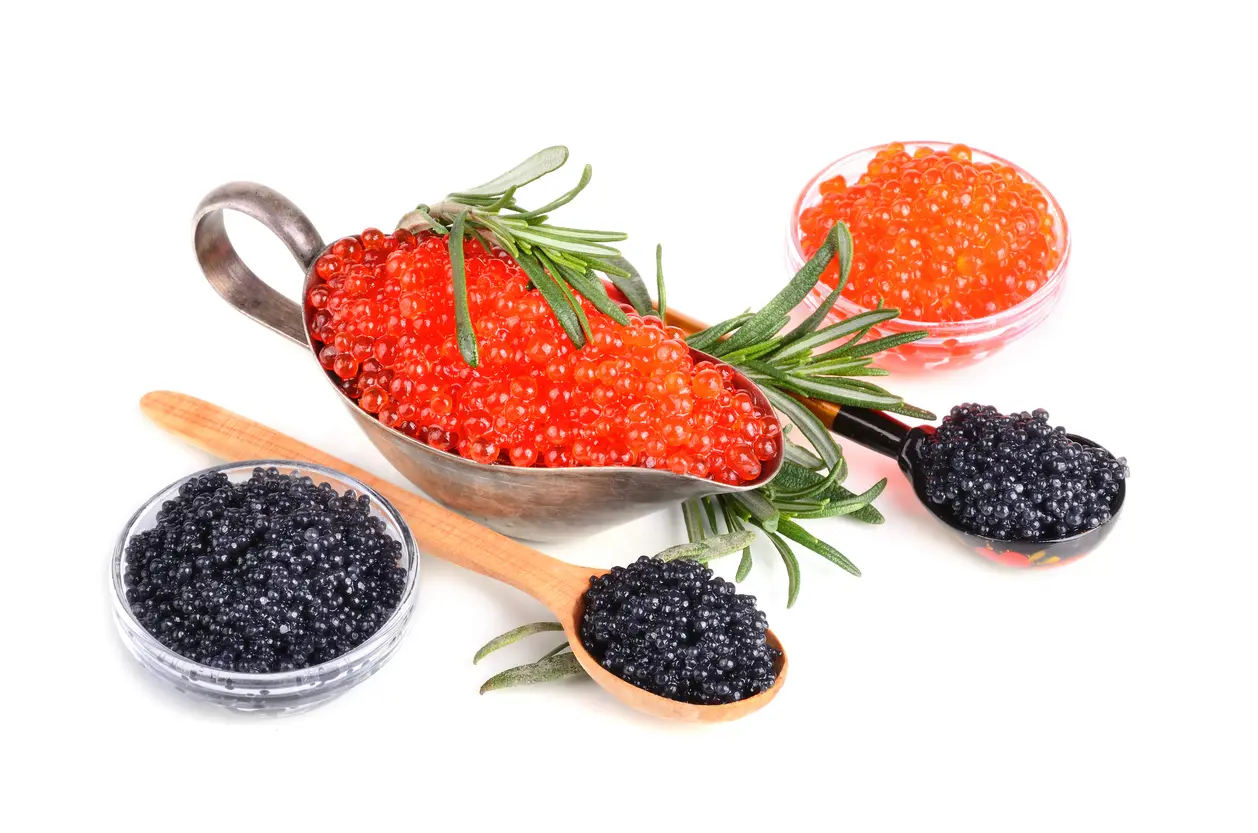
- Vitamin D content: 19 IU in 1 tbsp [19] USDA National Nutrient Database for Standard Reference Release 28 Nutrients: Vitamin D (IU). https://ods.od.nih.gov/pubs/usdandb/VitaminD-Content.pdf
- Health benefits: If you’re feeling fancy, caviar contains a small amount of vitamin D to bump up your daily intake. It is also a rich Source of omega-3 fatty acids and vitamin B12 for brain and nerve function.
- How to eat it: Enjoy caviar as a flavorful topping on whole-grain crackers or eggs for a boost of omega-3s.
Plant-Based / Fortified Sources
12. Mushrooms exposed to sunlight (like maitake and portobello)
- Vitamin D content: 0-1110 IU (based on time exposed to UV light) [21] Current Dietary Guidelines. Food Sources of Vitamin D.
- Health benefits: Mushrooms are antioxidant-rich, supporting immune health and providing key nutrients for energy and immunity, like B vitamins and selenium.
- How to eat them: Sneak them into an omelet, add to a salad, or mix them into your favorite pasta sauce.
13. Fortified plant-based yogurts
- Vitamin D content: 0-157 IU per 1 cup (varies based on brand) [21] Current Dietary Guidelines. Food Sources of Vitamin D.
- Health benefits: Plant-based yogurts, like many yogurts, are a good source of probiotics, the beneficial bacteria that support gut health. These dairy-free yogurts can also be especially helpful for someone who is lactose intolerant.
- How to eat it: Top plant-based yogurt with fruit, nuts, or seeds for a satisfying snack or breakfast, or mix into smoothies and sauces for a vitamin D boost.
14. Fortified soy milk
- Vitamin D content: 100-144 IU in 1 cup [3] National Institutes of Health. Vitamin D. National Institutes of Health. Published July 26, 2024.
- Health benefits: Soy is a complete plant-based protein, which means it provides all the essential amino acids (protein-building blocks) for optimal health. Its calcium content is also similar to the amount found in dairy milk.
- How to drink it: Add fortified soy milk to smoothies, coffee, or over cereal as a non-dairy alternative.
15. Fortified oat milk
- Vitamin D content: 100-144 IU per 1 cup [3] National Institutes of Health. Vitamin D. National Institutes of Health. Published July 26, 2024.
- Health benefits: Contains beta-glucan, a fiber that supports heart health. It is also a good option for those who are lactose-intolerant or vegan and prefer its nutty flavor.
- How to eat it: Add oat milk to your coffee, smoothies, or baking for a dairy-free, nutty flavor that packs fiber and essential nutrients.
16. Fortified almond milk
- Vitamin D content: 107 IU in 1 cup [21] Current Dietary Guidelines. Food Sources of Vitamin D.
- Health benefits: Almond milk is lower in calories than most milks but still contains added calcium, vitamin D, and other essential nutrients to promote health.
- How to drink it: Enjoy fortified almond milk in oatmeal instead of water, as a smoothie base, or a low-calorie dairy alternative in your favorite recipes.
17. Fortified orange juice
- Vitamin D content: 100 IU in 1 cup [21] Current Dietary Guidelines. Food Sources of Vitamin D.
- Health benefits: Orange juice supplies vitamin C for immune support in addition to bone-supporting vitamin D.
- How to drink it: Enjoy an 8-ounce glass of 100% orange juice with breakfast or as a midday boost to get in some extra vitamin D. Look for lower sugar or no added sugar varieties if possible to keep sugar intake low.
18. Tofu
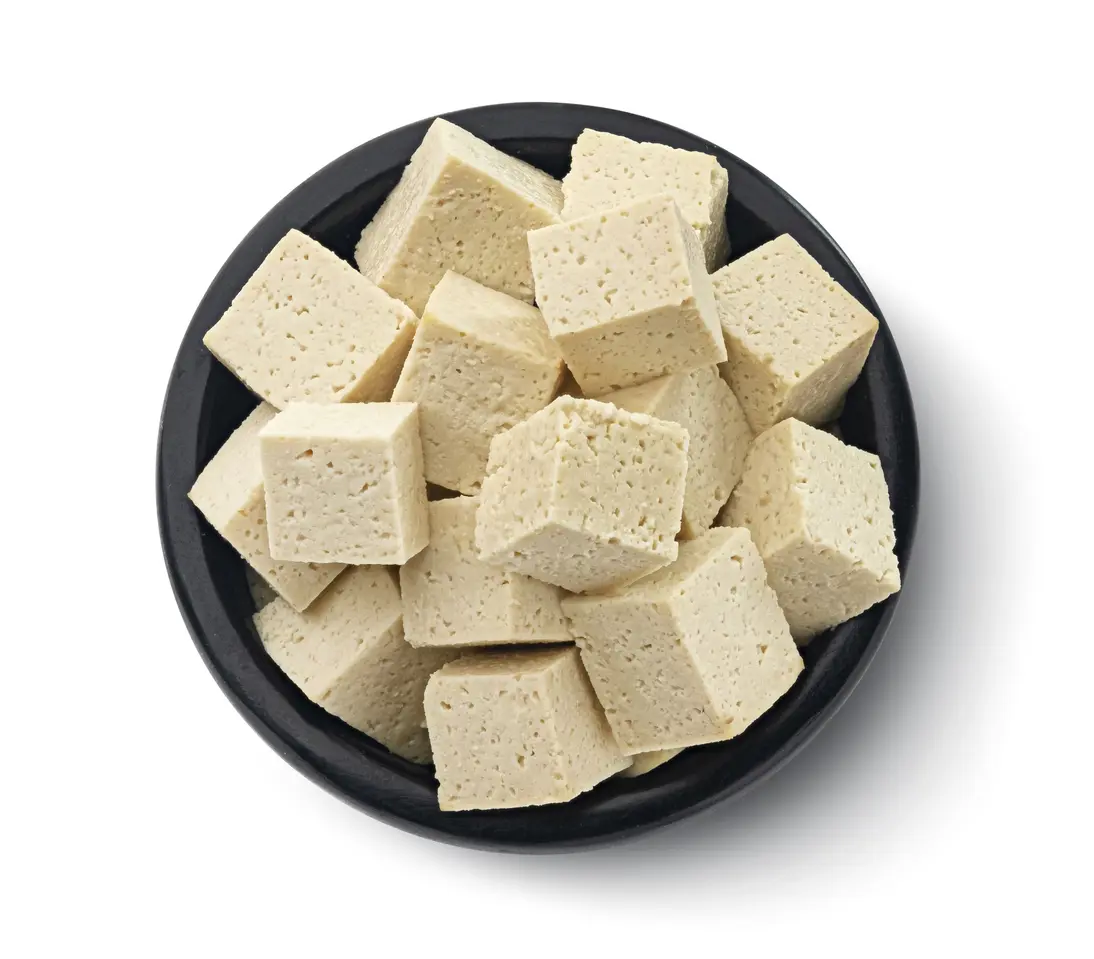
- Vitamin D content: 100 IU per 3.2 oz [19] USDA National Nutrient Database for Standard Reference Release 28 Nutrients: Vitamin D (IU). https://ods.od.nih.gov/pubs/usdandb/VitaminD-Content.pdf
- Health benefits: Complete plant-based protein that also contains calcium for bone health.
- How to eat it: Many people are intimidated by tofu, but it’s actually very simple to make. Saute tofu for a few minutes in olive oil and add to stir-fries, soups, or salads for a quick plant-based meal.
19. Fortified margarine/spreads
- Vitamin D content: 60-100 IU per tbsp (varies based on brand) [27] FoodData Central. USDA. Margarine, regular, with added vitamin D.
- Health benefits: Spreads are typically lower in saturated fat and cholesterol than regular butter. And while not all are plant-based, the majority are made from vegetable-based oils.
- How to eat it: Spread margarine on whole-grain toast or steamed veggies as a heart-healthy alternative to butter. Stick to a one-tablespoon serving to keep calories in check.
20. Fortified cereals
- Vitamin D content: 80 IU in 1 cup [3] National Institutes of Health. Vitamin D. National Institutes of Health. Published July 26, 2024.
- Health benefits: Fortified cereals also include other essential vitamins and minerals such as iron and B vitamins, which support energy production.
- How to eat it: Enjoy for breakfast with berries or on top of your favorite Greek yogurt for some crunch. For bigger health benefits, opt for lower sugar cereals with less than 7 grams of added sugar per serving.
Tips to Increase Vitamin D Absorption
If you’re not eating enough vitamin D in your diet, there are ways to maximize the amount you are taking in. Here are a few easy ways to do this.
Pair vitamin D-rich foods with healthy fats
Since vitamin D is a fat-soluble vitamin, it needs fat to be absorbed. Pairing vitamin D-rich foods with healthy fat sources like avocados, nuts, and olive oil will enhance its absorption to ensure you get the most out of your vitamin D intake. For example, pair a grilled salmon with an avocado spread, or drizzle some olive oil on top of your salmon before grilling.
Get regular sun exposure
If possible, based on where you live, aim for 4-15 minutes of midday sunlight at least a few days a week. This is enough to get an adequate amount of vitamin D without overdoing it on sun exposure. Midday time is ideal, between 10:00 a.m. and 4:00 p.m., when the sun’s UV rays are strongest, and therefore you can soak up as much vitamin D as possible. [28] Raman R. How to Safely Get Vitamin D From The Sun. Healthline. Published April 28, 2018.
Consider vitamin D supplementation
If you’re not able to get enough vitamin D from the sun or through your diet, you may want to ask your doctor about a vitamin D supplement. If your blood levels are low or borderline low, your doctor can suggest the appropriate vitamin D dose to bring your numbers to a healthy level and keep them there.
Avoid overcooking fish
It’s also important to avoid overcooking fish, as cooking fish too much or at too high a heat, such as deep frying, can reduce the amount of vitamin D in the food. [29] West H. What Is the Healthiest Way to Cook Fish? Healthline. Published July 6, 2017. Alternatively, boiling, baking, or grilling are the best methods to retain as much vitamin D in fish as possible. [30] Sridonpai P, Judprasong K, Tirakomonpong N, et al. Effects of Different Cooking Methods on the Vitamin D Content of Commonly Consumed Fish in Thailand. Foods. 2022;11(6):819. Published 2022 Mar 12. doi:10.3390/foods11060819
Special Considerations
Certain populations and age groups may need to be more diligent with getting in enough vitamin D, as they may be more at risk for a deficiency.
Older adults
Older adults are at higher risk for vitamin D deficiency because the skin becomes less efficient at producing vitamin D with age. [31] Giustina, A., Bouillon, R., Dawson-Hughes, B. et al. Vitamin D in the older population: a consensus statement. Endocrine 79, 31–44 (2023). https://doi.org/10.1007/s12020-022-03208-3 They may also spend more time indoors or have limited intake from food.
In this scenario, older adults should focus on vitamin D-rich foods, like fatty fish, egg yolks, and fortified dairy.
People with darker skin
People with darker skin may have more difficulty producing vitamin D through sun exposure due to higher melanin levels, which naturally block UV rays. [32] Yousef S, Papadimitropoulos M, Faris M, et al. Melanin levels in relation to vitamin D among first-generation immigrants from different ethnic groups and origins: A comparative national Canadian cross-sectional study. Front Med (Lausanne). 2023;9:992554. Published 2023 Jan 9. doi:10.3389/fmed.2022.992554
Regular screening and considering a vitamin D supplement can help prevent deficiency.
Those who live in northern latitudes
Those living in northern latitudes experience long winters with limited sunlight, significantly reducing the body’s ability to produce vitamin D naturally.
Since food sources are limited, increasing intake of fortified foods or adding a supplement, especially during the darker months, can be a helpful strategy.
People who spend most time indoors
People who spend most of their time indoors, whether due to lifestyle, work, or health reasons, have minimal exposure to sunlight, which is the body’s primary source of vitamin D.
Taking brief outdoor walks during midday hours, when possible, can be a beneficial strategy.
Vegans/vegetarians
Vegans and vegetarians may struggle to get enough vitamin D because the richest sources come from fatty fish, egg yolks, and fortified dairy products.
Incorporating fortified plant-based milks, cereals, and UV-exposed mushrooms can help boost vitamin D intake, especially when paired with a meal that contains healthy fats to support absorption of this fat-soluble vitamin.
People with digestive or absorption issues
Individuals with digestive or absorption problems, such as those with Crohn’s disease or celiac disease, often have trouble absorbing fat-soluble vitamins like vitamin D from food. [33] Fabisiak N, Fabisiak A, Watala C, Fichna J. Fat-soluble Vitamin Deficiencies and Inflammatory Bowel Disease: Systematic Review and Meta-Analysis. J Clin Gastroenterol. 2017;51(10):878-889. doi:10.1097/MCG.0000000000000911
In these cases, regular sunlight and considering a supplement tailored to your needs to maintain adequate vitamin D can be beneficial.
When Should You Supplement?
There may be times you’re trying your very best, but you may still be struggling to eat enough vitamin D foods. Here are a few cases when you may want to consider a vitamin D supplement for peace of mind.
- You have a diagnosed vitamin D deficiency
- You have limited sun exposure
- You are not getting enough in your diet
A note on toxicity: While vitamin D toxicity is not common, overdoing it is still possible.
Since vitamin D enhances calcium absorption, too much vitamin D may lead to a buildup of calcium in the blood called hypercalcemia. This condition can lead to stomach upset, vomiting, weakness, and frequent urination. In more severe cases, too much calcium can cause kidney stones and bone pain, both of which can be incredibly painful. [34] Zeratsky K. Vitamin D toxicity: What if you get too much? Mayo Clinic. Published March 22, 2022.
Before grabbing high-dose vitamin D supplements, consult with your doctor and get a blood test first to know your numbers. Based on your current vitamin D level, your doctor will recommend a certain dose of vitamin D supplement to provide what your body needs while leaving you feeling good in the process.
Conclusion
Knowing what foods have vitamin D is one of the best ways to support your bone health, immune system, and overall well-being, as this is one of the best ways to get in your daily dose.
As a starting point, it’s helpful to take a few moments to evaluate your current dietary intake and see if you’re including foods high in vitamin D, such as salmon, mushrooms, and fortified plant foods.
Even small daily additions and swaps, such as adding fortified milk to your cereal or choosing salmon for dinner, can make a significant impact over time. And whether you’re a carnivore or eat mostly plants, there are vitamin D-rich options to match your lifestyle.
For personalized guidance, speak with your healthcare provider to determine the best health plan for you.
Was this article helpful?
-
Vitamin D deficiency 2.0: an update on the current status worldwide. Eur J Clin Nutr. 2020;74(11):1498-1513. doi:10.1038/s41430-020-0558-y ; Amrein K et al.;
https://pubmed.ncbi.nlm.nih.gov/31959942/ -
Effects of Supplemental Vitamin D on Bone Health Outcomes in Women and Men in the VITamin D and OmegA‐3 TriaL (VITAL), Journal of Bone and Mineral Research, Volume 35, Issue 5, 1 May 2020, Pages 883–893, https://doi.org/10.1002/jbmr.3958; Meryl S LeBoff et al.;
https://pubmed.ncbi.nlm.nih.gov/31923341/ -
National Institutes of Health. Vitamin D. National Institutes of Health. Published July 26, 2024. ;
https://ods.od.nih.gov/factsheets/VitaminD-HealthProfessional/ -
Vitamin D's Effect on Immune Function. Nutrients. 2020;12(5):1248. Published 2020 Apr 28. doi:10.3390/nu12051248 ; Martens PJ, Gysemans C, Verstuyf A, Mathieu AC. ;
https://pubmed.ncbi.nlm.nih.gov/32353972/ -
Fenercioglu AK. The Anti-Inflammatory Roles of Vitamin D for Improving Human Health. Current Issues in Molecular Biology. 2024; 46(12):13514-13525. https://doi.org/10.3390/cimb46120807; Fenercioglu AK.;
https://pubmed.ncbi.nlm.nih.gov/39727935/ -
Association between Vitamin D Supplementation and Mental Health in Healthy Adults: A Systematic Review. J Clin Med. 2021;10(21):5156. Published 2021 Nov 3. doi:10.3390/jcm10215156; Guzek D, Kołota A, Lachowicz K, Skolmowska D, Stachoń M, Głąbska D. ;
https://pubmed.ncbi.nlm.nih.gov/34768677/ -
Mayo Clinic. Seasonal Affective Disorder (SAD) - Symptoms and Causes. Mayo Clinic. Published December 14, 2021. ;
https://www.mayoclinic.org/diseases-conditions/seasonal-affective-disorder/symptoms-causes/syc-20364651 -
Cleveland Clinic. Vitamin D deficiency: Causes, symptoms & treatment. Cleveland Clinic. Published August 2, 2022. ;
https://my.clevelandclinic.org/health/diseases/15050-vitamin-d-vitamin-d-deficiency -
Vitamin D and Its Role on the Fatigue Mitigation: A Narrative Review. Nutrients. 2024;16(2):221. Published 2024 Jan 10. doi:10.3390/nu16020221; Di Molfetta IV, Bordoni L, Gabbianelli R, Sagratini G, Alessandroni L. ;
https://pubmed.ncbi.nlm.nih.gov/38257114/ -
Vitamin D deficiency is associated with tibial bone pain and tenderness. A possible contributive role. Int J Rheum Dis. 2018;21(4):788-795. doi:10.1111/1756-185X.13253; Babaei M, Esmaeili Jadidi M, Heidari B, Gholinia H. ;
https://pubmed.ncbi.nlm.nih.gov/29314669/ -
An Update on the Effects of Vitamin D on the Immune System and Autoimmune Diseases. Int J Mol Sci. 2022;23(17):9784. Published 2022 Aug 29. doi:10.3390/ijms23179784; Sîrbe C, Rednic S, Grama A, Pop TL. ;
https://pubmed.ncbi.nlm.nih.gov/36077185/ -
Mayo Clinic. Rickets - Symptoms and Causes. Mayo Clinic. Published February 25, 2021. ;
https://www.mayoclinic.org/diseases-conditions/rickets/symptoms-causes/syc-20351943 -
Vitamin D Deficiency, Osteoporosis and Effect on Autoimmune Diseases and Hematopoiesis: A Review. Int J Mol Sci. 2021;22(16):8855. Published 2021 Aug 17. doi:10.3390/ijms22168855; De Martinis M, Allegra A, Sirufo MM, et al. ;
https://pmc.ncbi.nlm.nih.gov/articles/PMC8396272/ -
Comparison of the Effect of Daily Vitamin D2 and Vitamin D3 Supplementation on Serum 25-Hydroxyvitamin D Concentration (Total 25(OH)D, 25(OH)D2, and 25(OH)D3) and Importance of Body Mass Index: A Systematic Review and Meta-Analysis. Advances in Nutrition (Bethesda, Md). Published online October 20, 2023:S2161-8313(23)013947. doi:https://doi.org/10.1016/j.advnut.2023.09.016; van den Heuvel EG, Lips P, Schoonmade LJ, Lanham-New SA, van Schoor NM. ;
https://pubmed.ncbi.nlm.nih.gov/37865222/ -
National Institutes of Health. Vitamin D. National Institutes of Health. Published 2022. https://ods.od.nih.gov/factsheets/VitaminD-Consumer/;
https://ods.od.nih.gov/factsheets/VitaminD-Consumer/ -
FoodData Central. USDA. Fish Oil, Cod Liver. ;
https://fdc.nal.usda.gov/food-details/173577/nutrients -
USDA National Nutrition Database - Vitamin D IU. ;
https://www.nal.usda.gov/sites/default/files/page-files/Vitamin%20DIU.pdf -
Cleveland Clinic. Omega-3 Fatty Acids. Cleveland Clinic. Published November 17, 2022. ;
https://my.clevelandclinic.org/health/articles/17290-omega-3-fatty-acids -
USDA National Nutrient Database for Standard Reference Release 28 Nutrients: Vitamin D (IU). https://ods.od.nih.gov/pubs/usdandb/VitaminD-Content.pdf;
https://ods.od.nih.gov/pubs/usdandb/VitaminD-Content.pdf -
The story on fish and heart health. Harvard Health. Published June 1, 2023.; Solan M. ;
https://www.health.harvard.edu/heart-health/the-story-on-fish-and-heart-health -
Current Dietary Guidelines. Food Sources of Vitamin D. ;
https://www.dietaryguidelines.gov/resources/2020-2025-dietary-guidelines-online-materials/food-sources-select-nutrients/food-sources-vitamin-d -
Selenium Status: Its Interactions with Dietary Mercury Exposure and Implications in Human Health. Nutrients. 2022;14(24):5308. Published 2022 Dec 14. doi:10.3390/nu14245308; Tinggi U, Perkins AV. ;
https://pubmed.ncbi.nlm.nih.gov/36558469/ -
Eating more sardines instead of fish oil supplementation: Beyond omega-3 polyunsaturated fatty acids, a matrix of nutrients with cardiovascular benefits. Front Nutr. 2023;10:1107475. Published 2023 Apr 14. doi:10.3389/fnut.2023.1107475; Santos HO, May TL, Bueno AA. ;
https://pmc.ncbi.nlm.nih.gov/articles/PMC10153001/ -
FoodData Central. USDA. Beef liver, raw. ;
https://fdc.nal.usda.gov/food-details/169451/nutrients -
FoodData Central. USDA. Egg, whole, raw, fresh. ;
https://fdc.nal.usda.gov/food-details/171287/nutrients -
National Institutes of Health. Office of Dietary Supplements - Choline. Nih.gov. Published 2017.;
https://ods.od.nih.gov/factsheets/Choline-HealthProfessional/ -
FoodData Central. USDA. Margarine, regular, with added vitamin D. ;
https://fdc.nal.usda.gov/food-details/171436/nutrients -
Raman R. How to Safely Get Vitamin D From The Sun. Healthline. Published April 28, 2018.;
https://www.healthline.com/nutrition/vitamin-d-from-sun -
West H. What Is the Healthiest Way to Cook Fish? Healthline. Published July 6, 2017. ;
https://www.healthline.com/health/healthiest-way-to-cook-fish -
Effects of Different Cooking Methods on the Vitamin D Content of Commonly Consumed Fish in Thailand. Foods. 2022;11(6):819. Published 2022 Mar 12. doi:10.3390/foods11060819; Sridonpai P, Judprasong K, Tirakomonpong N, et al. ;
https://www.mdpi.com/2304-8158/11/6/819 -
Vitamin D in the older population: a consensus statement. Endocrine 79, 31–44 (2023). https://doi.org/10.1007/s12020-022-03208-3; Giustina, A., Bouillon, R., Dawson-Hughes, B. et al. ;
https://pubmed.ncbi.nlm.nih.gov/36287374/ -
Melanin levels in relation to vitamin D among first-generation immigrants from different ethnic groups and origins: A comparative national Canadian cross-sectional study. Front Med (Lausanne). 2023;9:992554. Published 2023 Jan 9. doi:10.3389/fmed.2022.992554; Yousef S, Papadimitropoulos M, Faris M, et al. ;
https://pubmed.ncbi.nlm.nih.gov/36698822/ -
Fat-soluble Vitamin Deficiencies and Inflammatory Bowel Disease: Systematic Review and Meta-Analysis. J Clin Gastroenterol. 2017;51(10):878-889. doi:10.1097/MCG.0000000000000911; Fabisiak N, Fabisiak A, Watala C, Fichna J. ;
https://pubmed.ncbi.nlm.nih.gov/28858940/ -
Vitamin D toxicity: What if you get too much? Mayo Clinic. Published March 22, 2022. ; Zeratsky K. ;
https://www.mayoclinic.org/healthy-lifestyle/nutrition-and-healthy-eating/expert-answers/vitamin-d-toxicity/faq-20058108

